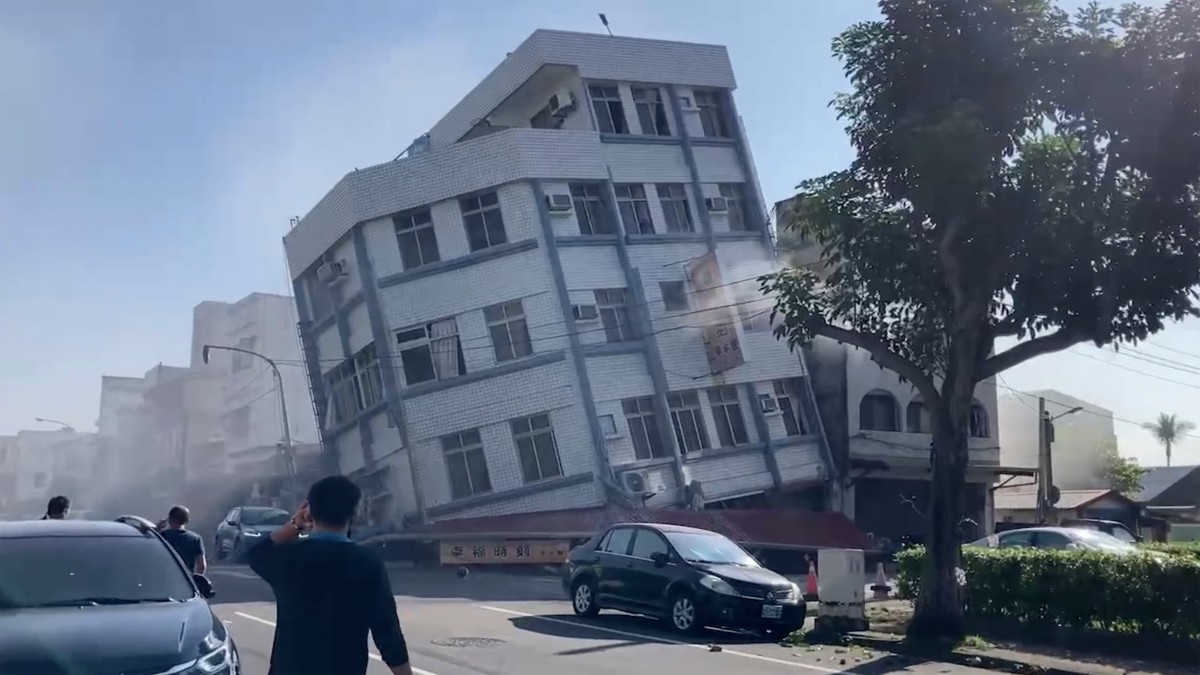A powerful 7.4-magnitude earthquake struck off the coast of Taiwan on Wednesday morning, the strongest to jolt the island in a quarter century, killing four people and injuring dozens.
The earthquake damaged multiple buildings in the mountainous, lightly populated east coast county of Hualien, where the epicentre was and where rescue efforts are taking place.
The quake, which caused tremors throughout Taiwan and set off at least nine landslides, also sparked a tsunami warning for the southern Japanese islands and the Philippines, which was lifted about two hours later.
Let’s take a closer look.
How bad is the earthquake?
The 7.2-magnitude earthquake struck about 18 kilometres south of Hualien city and was about 35 kilometres (21 miles) deep, as per The Associated Press. The US Geological Survey put the earthquake’s magnitude at 7.4. The city’s population is roughly 100,000.
Landslides along the mountainous central east coast and more than 25 aftershocks have been registered so far, as per media reports.
Four people died in Hualien County and at least 57 were injured in the quake that struck just before 8 am, as per Taiwan’s national fire agency. The local United Daily News reported three hikers died in rockslides in Taroko National Park near the offshore epicentre.
At least 26 buildings have collapsed, more than half in Hualien, with about 20 people trapped and rescue work ongoing, it said.
A five-story building in Hualien appeared heavily damaged, collapsing its first floor and leaving the rest leaning at a 45-degree angle.
Impact Shorts
More ShortsIn the capital, tiles fell from older buildings and within some newer office complexes, while debris fell from some building sites.
Schools evacuated their students to sports fields, equipping them with yellow safety helmets. Some also covered themselves with textbooks to guard against falling objects as aftershocks continued.
Train service was suspended across the island of 23 million people, as was subway service in Taipei, where a newly constructed above-ground line partially separated.
The national legislature, a converted school built before World War II, also had damage to walls and ceilings.
The Taipei city government said it had not received any reports of major damage and the city’s MRT was up and running soon after the tremor, while electricity operator Taipower said more than 87,000 households in Taiwan were still without power.
Taiwan’s two nuclear power stations were not affected by the temblor, Taipower added.
According to Reuters, semiconductor giant Taiwan Semiconductor Manufacturing Co (TSMC) said it had evacuated some fabrication plants and its safety systems were operating normally.
At the time of writing, a tsunami wave of 30 centimetres (about one feet) was reported along the coast of Yonaguni Island about 15 minutes after the quake struck. Smaller waves were measured in Ishigaki and Miyako islands.
Japan sent military aircraft to gather information about the impact in the Okinawa region.
The earthquake was also felt in Shanghai and several provinces along China’s southeastern coast, according to Chinese media.
For those uninitiated, China and Taiwan are about 160 kilometres (100 miles) apart. China issued no tsunami warnings for the Chinese mainland.
Residents of China’s Fujian province reported violent shaking, according to Jimu News, an online outlet. One man told the local outlet that the shaking awakened him and lasted about a minute.
In the Philippines, residents along the northern coast were told to evacuate to higher ground, but no major tsunami was reported about three hours after the quake.
How common are earthquakes in Taiwan?
Earthquakes are not new to Taiwan, which lies along the Pacific “Ring of Fire," the line of seismic faults encircling the Pacific Ocean where most of the world’s earthquakes occur. Taiwan saw 91 major earthquakes between 1901 and 2000, with 48 of them producing fatalities, as per Jagran Josh.
The country even has an early warning system, which detects ground shaking as it happens in the epicentral region, and immediately sends an alert that travels faster than the seismic energy and associated ground shaking.
In February 2018, Hualien was last struck by a deadly 6.4 magnitude quake, which killed 17 people, and collapsed a historic hotel and other buildings. The region experiences earthquakes bigger than magnitude seven about once every 30 years, wrote Dee Ninis, an earthquake scientist at Monash University, in The Conversation article.
A 6.4 magnitude quake in southwestern Taiwan in February 2016, killed at least 114 people. According to The New York Times which quoted the USGS, 90 earthquakes of that scale or greater occurred within 250 kilometres of the quake’s location over the previous 100 years.
In December 1941, a 7.3-magnitude earthquake rocked southwestern Taiwan, killing hundreds, as per the USGS.
When was the last deadliest earthquake?
The most catastrophic seismic event on record in onshore Taiwan was the Chi-Chi or Jiji quake, which struck on 21 September 1999. Measuring in at a magnitude of 7.7, the quake hit central Taiwan’s Nantou township around 2 am local time, killing 2,400 people, injuring around 100,000 and toppling 50,000 buildings, as per AP.
The deadly earthquake encouraged the government to upgrade the national disaster relief system-related regulations and improve its earthquake early warning system.
The strongest quake of 8.0 magnitude on the island occurred on 3 December 1966, killing seven people, according to WorldData.info.
In April 1935, a 7.1-magnitude earthquake near the island’s west coast, killed more than 3,200 people, injured more than 12,000 and damaged more than 50,000 homes, as per the central weather administration.
With inputs from agencies


)

)
)
)
)
)
)
)
)



